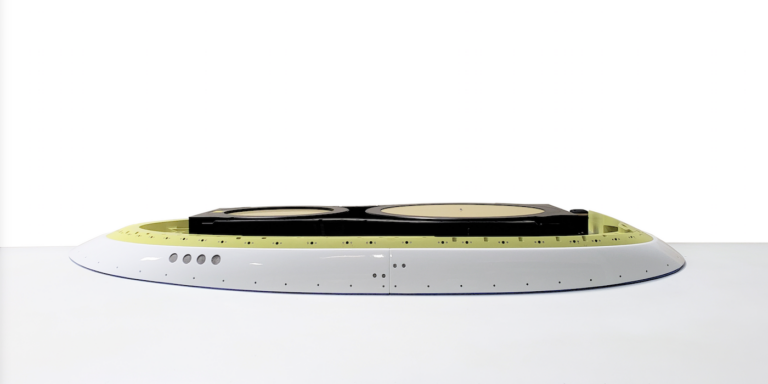The FAA has approved and certified Inmarsat’s next-generation connectivity terminal, designed to further optimise the performance of its GX Aviation inflight broadband system. The FAA supplemental type certificate (STC) authorises the Falcon 300 terminal to be installed on Boeing 737 aircraft, marking a milestone for the lightweight, low-drag hardware.
The terminal has been developed with GDC Advanced Technology, an expert in aerospace engineering and technical services, modifications and electronic systems, and includes GDC’s dual modem manager (MODMAN), with components from Kontron, together with a proven, reliable flat panel antenna from ThinKom.
The certification was obtained under GDC’s Organization Designation Authorization (ODA) programme from its facility in Fort Worth, Texas. STCs for additional aircraft types are now underway, in addition to linefit plans for the Falcon 300 terminal on Boeing and Airbus airframes.
The Falcon 300 has already been selected by Saudia, the national airline of Saudi Arabia, as part of an agreement for GX Aviation to be installed and activated onboard its upcoming fleet of 35 Airbus A321neo and Airbus A321XLR aircraft. At APEX Expo 2021 in Long Beach, California, Inmarsat Aviation’s president, Philippe Carette, welcomed a senior delegation from Saudia, including the airline’s CEO, Captain Ibrahim S. Koshy, at the company’s stand, where they hosted a celebration and gift exchange.
The terminal is also available as part of Inmarsat’s new GX+ North America connectivity solution, which seamlessly integrates the worldwide coverage of Inmarsat’s Global Xpress High-Throughput Satellite (HTS) network with the capacity of Hughes’ Jupiter HTS constellation across North America. According to Inmarsat this arrangement brings “unprecedented capacity, speed and reliability to North American airlines and their passengers”, who can undertake “unconstrained bandwidth activities” on flights, even when flying at full capacity over the busiest airport hubs.
Kurt Weidemeyer, Inmarsat Aviation’s SVP of technology, said that Inmarsat has completed extensive assessments and test flights that have demonstrated the terminal’s ability to deliver consistently the highest levels of connectivity, even over the world’s busiest airspaces.
Inmarsat is also celebrating the fifth anniversary of GX Aviation during APEX Expo. The network entered commercial service in 2016 and has become the company’s most successful passenger inflight broadband service, selected by more than 35 airlines, with a total order book of more than 1,500 aircraft, approximately 550 of which have been activated.
Inmarsat is planning a number of major enhancements to the GX network, which currently consists of five Ka-band satellites. Seven further satellites are set to launch by 2024, starting later this month with the first Inmarsat-6, I-6 F1, which the company says is “the largest, most sophisticated commercial communications satellite ever built”.
These launches will be followed by four additional satellites in geostationary orbit – adding speed, capacity and resilience – and two in highly elliptical orbit, enabling the world’s only commercial mobile broadband service for aircraft flying in higher elevations and across the Arctic.





